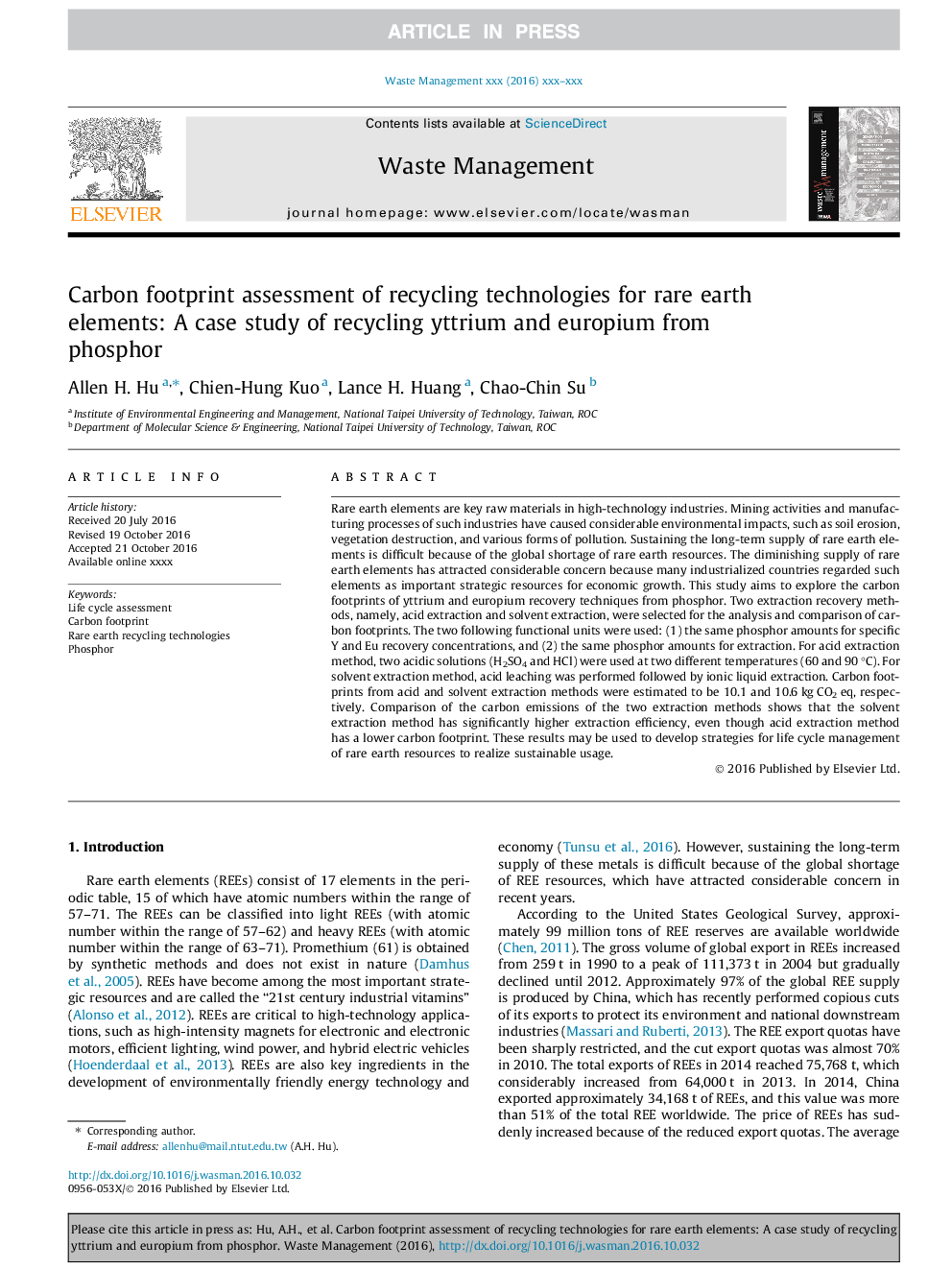| کد مقاله | کد نشریه | سال انتشار | مقاله انگلیسی | نسخه تمام متن |
|---|---|---|---|---|
| 5756839 | 1622626 | 2017 | 10 صفحه PDF | دانلود رایگان |
عنوان انگلیسی مقاله ISI
Carbon footprint assessment of recycling technologies for rare earth elements: A case study of recycling yttrium and europium from phosphor
ترجمه فارسی عنوان
ارزیابی رد پای کربن از فن آوری های بازیافت برای عناصر کمیاب خاکستری: مطالعه موردی از بازیافت یتریوم و یوروپیم از فسفر
دانلود مقاله + سفارش ترجمه
دانلود مقاله ISI انگلیسی
رایگان برای ایرانیان
کلمات کلیدی
ارزیابی چرخه حیات، رد پای کربن، فناوری بازیافت نادر زمین، فسفر،
موضوعات مرتبط
مهندسی و علوم پایه
علوم زمین و سیارات
مهندسی ژئوتکنیک و زمین شناسی مهندسی
چکیده انگلیسی
Rare earth elements are key raw materials in high-technology industries. Mining activities and manufacturing processes of such industries have caused considerable environmental impacts, such as soil erosion, vegetation destruction, and various forms of pollution. Sustaining the long-term supply of rare earth elements is difficult because of the global shortage of rare earth resources. The diminishing supply of rare earth elements has attracted considerable concern because many industrialized countries regarded such elements as important strategic resources for economic growth. This study aims to explore the carbon footprints of yttrium and europium recovery techniques from phosphor. Two extraction recovery methods, namely, acid extraction and solvent extraction, were selected for the analysis and comparison of carbon footprints. The two following functional units were used: (1) the same phosphor amounts for specific Y and Eu recovery concentrations, and (2) the same phosphor amounts for extraction. For acid extraction method, two acidic solutions (H2SO4 and HCl) were used at two different temperatures (60 and 90 °C). For solvent extraction method, acid leaching was performed followed by ionic liquid extraction. Carbon footprints from acid and solvent extraction methods were estimated to be 10.1 and 10.6 kg CO2 eq, respectively. Comparison of the carbon emissions of the two extraction methods shows that the solvent extraction method has significantly higher extraction efficiency, even though acid extraction method has a lower carbon footprint. These results may be used to develop strategies for life cycle management of rare earth resources to realize sustainable usage.
ناشر
Database: Elsevier - ScienceDirect (ساینس دایرکت)
Journal: Waste Management - Volume 60, February 2017, Pages 765-774
Journal: Waste Management - Volume 60, February 2017, Pages 765-774
نویسندگان
Allen H. Hu, Chien-Hung Kuo, Lance H. Huang, Chao-Chin Su,
